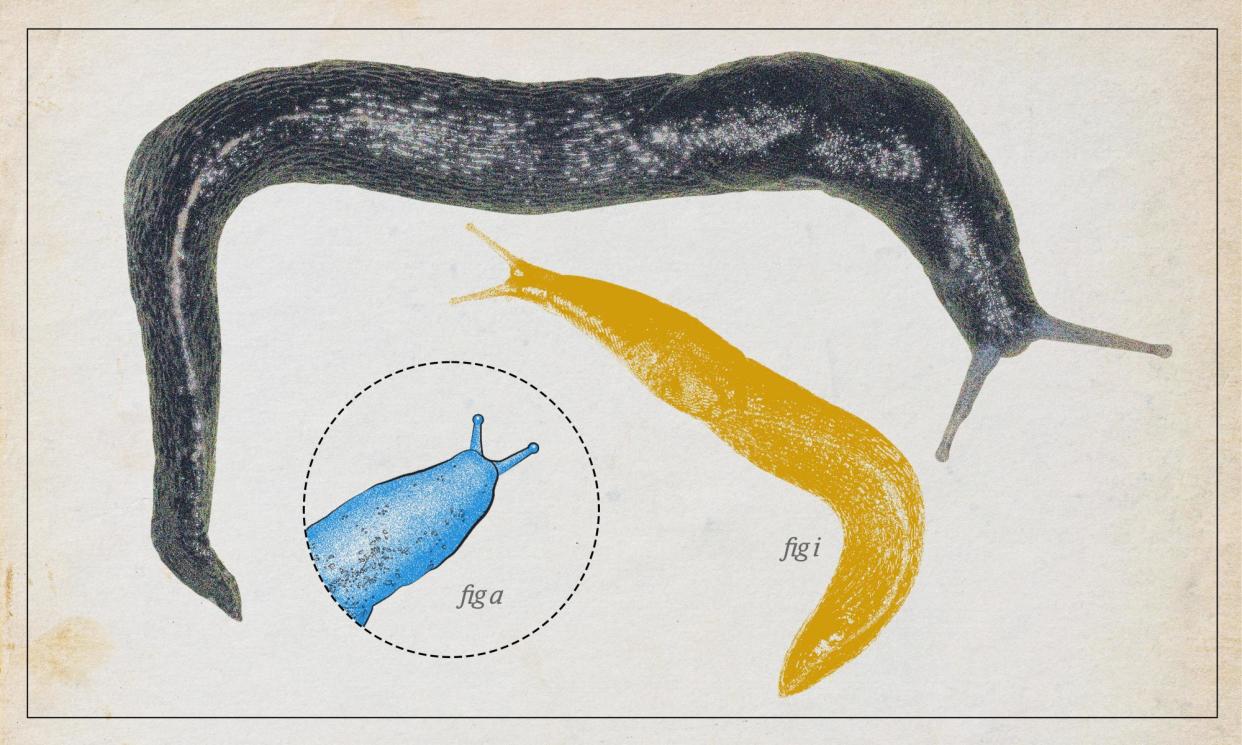Ash-black slug – this magnificent gastropod is the epitome of grace

If elegance is your thing then consider the ash-black slug. Its nightly forays through the forest in search of fungi are the epitome of grace, a stately glide not only along the woodland floor but up and along the mossy branches of trees.
If size is your thing, then the ash-black slug must get your vote. Britain’s biggest slug is one of the largest land slugs in the world. The ash-black slug can grow up to 30cm (11.8in) in length, although most measure up at a still impressive 10-20cm.
This magnificent gastropod (meaning “belly-foot”) is a keeled slug with a pale-coloured ridge running along its back contrasting with its dark-grey colouration. It has a pale stripe along its foot as well.
Slugs are disliked for devouring gardeners’ lettuces but the ash-black slug is not a garden pest but an ancient woodland dweller. Here it feeds on fungi, algae and lichen and lives for an unusually long time, up to five years.
The ash-black slug’s elegance in motion turns into something stranger when it is mating time.
Ash-black slugs are hermaphrodites, so each individual is male and female at the same time. They can reproduce alone but prefer to find a partner, attracting them with a trail of scented slime as they glide up into the trees.
When they find a partner, the pair perform a twirling dance, eventually suspending themselves with mucus from a branch. A striking pale blue corkscrew-like appendage unfurls from the side of each slug’s head. Each corkscrew is actually its penis, and it is as long as the slug’s body.
The slugs pass a package of sperm to each other, and fertilise it themselves. Eggs are laid in the damp woodland floor and young emerge anytime from autumn to spring.
African savannahs may have their “big five” charismatic beasts but on Dartmoor national park there is a “little five” including the ash-black slug. The wet woodlands on the fringes of Dartmoor are a stronghold for the creature.
Threats include natural ones such as the blue ground beetle, which is Britain’s largest ground beetle. Its 3cm size is tiny compared with the slug but it ferociously attacks the bigger animal.
The ash-black slug is not endangered but unfortunately appears to be in decline, possibly because increased air pollution is reducing the ubiquity of sensitive lichens that are a key part of its diet.
So do different, vote slug.
Welcome to the Guardian’s UK invertebrate of the year competition. Every day between 2 April and 12 April we’ll be profiling one of the incredible invertebrates that live in and around the UK. Let us know which invertebrates you think we should be including here. And at midnight on Friday 12 April, voting will open to decide which is our favourite invertebrate – for now – with the winner to be announced on Monday 15 April.


